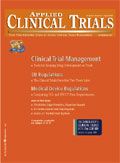Web 2.0 Revolution: Power to the People
From blogs to social networks, the newest Web is redefining the way we use technology.
If you haven't looked for it, you may have missed the quiet revolution occurring on the Internet. The change in the Web, dubbed "Web 2.0," is likely to improve the value and usability of the Internet for consumers, and has major untapped potential for corporate and other business users.

Paul Bleicher
Web 2.0 is one of those elusive Web terms that is used to describe many disparate threads of change. However, there are some shared underlying principles of Web 2.0 companies and platforms, which we'll discuss later.
For a definition of Web 2.0, we can turn to Wikipedia, the free encyclopedia that is itself a shining example of the potential for the new approach to the Web:
"The term Web 2.0 refers to a second generation of services available on the World Wide Web that lets people collaborate and share information online. In contrast to the first generation, Web 2.0 gives users an experience closer to desktop applications than the traditional static Web pages...The concept may include blogs and wikis."
To understand Web 2.0, we must appreciate its origins and roots. Some of you may not realize that there was even a Web 1.0, so it probably makes sense to start at the beginning.
Weaving history
When the World Wide Web (WWW) was first defined, it consisted almost entirely of static Web pages that each contained hyperlinks. A destination Web presence might have been a university, institution or company with an interlinking series of pages. Web directories such as Yahoo were established to categorize and provide search functionality for these sites. Web 1.0 was an exciting frontier for the pioneer Web surfer, and one that was easily mastered.
Once established, the WWW underwent almost continuous evolution, which was driven by the introduction of a variety of more dynamic technologies (Java, Shockwave and Flash, dynamic HTML, etc.). Web pages were dynamically created from a database, and the database could be customized for each user. For example, Yahoo evolved into My Yahoo for many users—a highly customized, dynamic portal of information and services that met the needs of each individual.
This newer Web is referred to by some as Web 1.5 and encompasses much of the Web as we experience it today. Web 1.5 linked bricks and mortar with the Web, leading to a major shift in the way we get our news; buy our clothing, electronic "toys," and books; and obtain information. It was built on the framework of Web 1.0 but added a variety of tools and an evolving sense of style and design.
Web 2.0 also builds upon the foundations of all that has come before it but takes some radical departures. The idea of tying together a group of disparate new Web applications and platforms was developed by two conference organizers (O'Reilly Media and MediaLive International) when brainstorming a conference concept. Web 2.0 was defined, more or less, by example: Companies that were old school (i.e., Web 1.0) and those that were new school (i.e., Web 2.0).
Before identifying unifying concepts, let's look at a few examples of Web 2.0 concepts.
Newer arrivals
The Wikipedia (www.wikipedia.com). An astounding example of the power of the commons, Wikipedia serves as a gigantic and very current encyclopedia that is created and maintained by its users. In contrast to a Web 1.0 encyclopedia (Britannica Online, for example), Wikipedia is completely dependent on users to create, update, and provide quality control for the content of its articles. The technology itself is very simple, open source software, but the power of the Wikipedia is the vast database of very detailed information on almost any topic, far exceeding most online encyclopedias in terms of detail and, often, quality of information.
Of course, since anybody can edit a Wikipedia article, some controversial topics can become battlegrounds for ideology. However, Wikipedia users are hopefully sophisticated enough to understand this and to take it into account when using the information.
Blogs (www.blogger.com, for example). The blogging revolution is in full force, powered by an enormous collection of dedicated people who create "Web logs" (otherwise known as blogs) on almost any topic, from politics to rock music.
Blogging software sites allow an unsophisticated user to set up an aesthetically pleasing blog in minutes and begin publishing on a topic of their choice almost immediately. The result has created citizen journalists, armchair political pundits, scientific commentators, and movie critics who are widely read and followed.
Each blog "advertises" other blogs by linking references to them, creating a huge interwoven tapestry of information that is completely separate from traditional information and media. The Web 1.0 equivalent of the blog was the personal Web page—a drastically different and static concept. The whole "blogosphere" can be searched through sites such as Technorati (http://www.technorati.com).
LinkedIn (www.linkedin.com). Web 2.0 emphasizes community and the power of the commons. A powerful example of this is LinkedIn, a Web community composed of professionals who wish to network.
When you join LinkedIn, you create a public profile that lists your previous positions and companies. When you invite friends to join, they become permanent "first degree" links to you. If they are already a member of the community, you become linked to their contacts through them.
The real value of LinkedIn is that it allows a user to search for and contact many people with whom they have no other connection. The site allows you to identify a chain of people who can connect you with the person you want to contact. A user can send a message through this chain that is passed along from person to person until it gets to the individual they want to contact. Remarkably, the concept works very effectively. The power of LinkedIn is in the community it creates.
Familiar concepts & uses
You are likely already familiar with aspects of Web 2.0 applications, which have been included on some Web sites for many years. For example, the ability to write and publish a book review on Amazon.com is a Web 2.0 concept, as is the ability for any user to rate the review. Similarly, the rating system used for buyers and sellers on Ebay is classic Web 2.0.
Interestingly, Web 2.0 concepts aren't restricted to the Web. Tim O'Reilly of the O'Reilly Network that developed the Web 2.0 concept points out that iTunes and TIVO are two examples of Web 2.0 applications, both integrating aspects of the Web with devices.
While the community aspects of iTunes and TIVO aren't significant, their devices use the Web to provide the user with a service (music downloads and television program recording, respectively) through a seamless experience of a device interacting with a large database.
2.0 principles
In my formulation, the organizing principles of Web 2.0 are:
- A service-oriented, "lite" architecture. Web 2.0 applications are more a platform than a stand-alone application, and often use a simple interface with sophisticated functionality. Judicious use of newer technologies (e.g., AJAX) gives the user a richer experience, more like a desktop application (e.g., Google Maps).
- Data-oriented collaboration. Most Web 2.0 applications are centered around a substantial database, often created, developed or vastly improved by its users.
- Organization of content through nonhierarchical methods. Unlike traditional structured directories, content in Web 2.0 applications can be searched and organized upon retrieval, or can be "tagged" by other users, providing a communal and dynamic organizational structure.
- Community building and user interaction. When a user interacts with a Web 2.0 application, they often create a presence within the community (e.g., LinkedIn), which becomes a center for further interactions, collaborations, and community building.
- The user as contributor. In many Web 2.0 settings, the user becomes a participant in the building of the platform. This may be as a contributor (Wikipedia, blogging), content reviewer (eBay reputation ratings), or even as a software tester (many Web 2.0 applications frequently change and add functions in a "beta" mode). While some applications require explicit participation, others "repurpose" individual activities such as content tagging for community use.
Promising value
Web 2.0 isn't just about fun sites; it is being put to work in corporate settings, even within the pharmaceutical industry. A company called TrueTrials appears to be putting together a Web 2.0-like service and community in which both sites and sponsors can participate. Investigative sites establish a presence and allow sponsors to contribute to their reputation by rating their performance in clinical trials. Through this rating system, the company can create a valuable database of rated sites for sponsors and provide new opportunities for highly rated sites.
Web 2.0 has been around for a few years and is based on technology and concepts that have existed since the bursting of the first dotcom bubble. Some predict that the value and activities created with Web 2.0 may be greater than the initial Internet revolution. The value that Web 2.0 brings to clinical trials and technology will depend mostly on the creativity, imagination, and participation of you—the end user.
Paul Bleicher MD, PhD, is the founder and chairman of Phase Forward, 880 Winter Street, Waltham, MA 02451, (888) 703-1122, paul.bleicher@phaseforward.comwww.phaseforward.com. He is a member of the Applied Clinical Trials Editorial Advisory Board.
